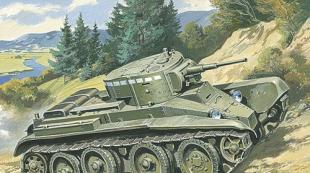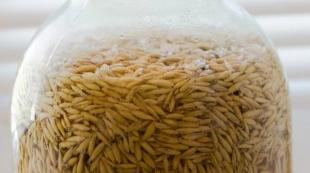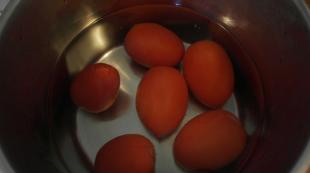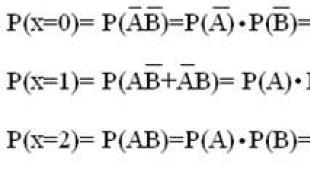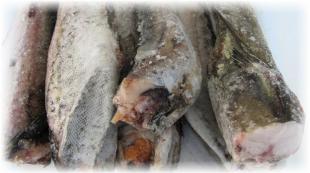Heterogeneous definitions examples from fiction. Homogeneous definitions
In some sentences there are words that perform the same syntactic function, refer to the same word, but are not homogeneous members. Such words are called heterogeneous members of a sentence.
The main differences between homogeneous and heterogeneous members of a sentence with examples are given in the table.
|
Signs |
Homogeneous members of the sentence |
Heterogeneous members of a sentence |
|
By value |
Characterize the word being defined on the one hand |
Characterize the word being defined from different angles |
|
By syntactic connection |
Can be connected by connecting, adversative, dividing and other conjunctions, non-union connection |
Usually, a conjunction or comma is not placed between heterogeneous members of a sentence |
|
By syntactic function |
Can be expressed by any member of the sentence |
Most often expressed by heterogeneous definitions |
|
Example sentences |
She speaks well in English, A in French. During the competition, the guys and decided puzzles, and ran relay race, and came up with questions for opponents. |
Wide wooden the table was in the corner of the room. I bought sweet green apples for pie. |
In the position after the word being defined, heterogeneous parts of the sentence are written separated by commas.
Example: Trees, high, noisy, bowed their branches to the water. ( Compare: High noisy the trees bowed their branches to the water).
How to distinguish homogeneous from heterogeneous definitions in a sentence?
Homogeneous definitions create a holistic impression of an object and name its specific quality (shape, size, color). Homogeneous definitions can be expressed by adjectives of the same category in meaning, less often - by an adjective and participial phrase (red and yellow walls; fox and hare holes; damp, reluctantly drying soil).
Heterogeneous definitions name different properties of the defined object. Heterogeneous definitions can be expressed by a combination of qualitative and relative adjectives, numeral and adjective, pronoun and adjective, etc. (a strong walnut; my favorite movie; the first mercury thermometer).
Examples of sentences with homogeneous and heterogeneous definitions: Misha had in his collection copper, silver And bronze coins ( homogeneous). - Misha collected ancient bronze coins ( heterogeneous). Katya put her things in big And small boxes ( homogeneous). - Katya put her things in big cardboard boxes ( heterogeneous).
Both homogeneous and heterogeneous members of a sentence can be used in one sentence.
Example: The artist painted with blue and red oil paints ( blue, red- homogeneous members of the sentence; blue oil, red oil- heterogeneous members of the sentence).
Article rating
Average rating: 4.5. Total ratings received: 47.
If several definitions refer to the same subject or object, this does not mean that you necessarily have a series of homogeneous definitions. There are also heterogeneous definitions. What is their difference?
Homogeneous definitions characterize an object from one side (by color, shape, size) or create a holistic picture of the object.
Homogeneous definitions connected by a coordinating connection; they equally directly relate to the defined noun and are pronounced with enumerative intonation.
Between homogeneous definitions you can usually insert a conjunction And .
For example: She ran into the room cheerful, loud laughing girl. (Cheerful, laughing– homogeneous definitions expressing mood, state, a conjunction can be placed between them And .) They stood in a vase red, orange And yellow flowers. (Red, orange And yellow- homogeneous definitions denoting a common feature - color.)
Heterogeneous definitions characterize an object from different angles. In this case, only the closest definition directly relates to the word being defined, and the other refers to the combination of the defined noun with the first definition.
Between heterogeneous definitions there is no coordinating connection, they are pronounced without enumerative intonation and do not allow the insertion of a conjunction And .
As a rule, heterogeneous definitions are expressed by adjectives of different categories (for example, high quality And relative ).
For example: She ran into the room small loud laughing girl. (Small, laughing– heterogeneous definitions, it is impossible to put a union between them And .)
They stood in a vase large red fragrant flowers.(Large, red, fragrant - adjectives denoting different characteristics: color, shape, smell; these are heterogeneous definitions.)
To differentiate homogeneous And heterogeneous definitions, it is necessary to take into account a whole complex of characteristics. When parsing and arranging punctuation marks, pay attention to the meaning, method of expression and order of definitions in the sentence.
Signs of homogeneity of definitions
Indicate signs of homogeneous objects: blue, yellow, red balls;
denote characteristics that are interdependent in context (= since, therefore): lunar, clear evening (= clear, because lunar);
denote artistic images, metaphors: lead, extinguished eyes;
there is a semantic gradation: joyful, festive, radiant mood;
the single definition is placed before the common one: empty, covered with snow field;
located after the defined word: woman young, beautiful, kind, intelligent, charming
;
denote a subjective characteristic (optional attribute): small, golden cloud; long, narrow carpet;
in the position after the word being defined: clouds round, high, golden gray, with delicate white edges
.
denote features that are synonymous in the context, while in the context they are united by some common feature (the similarity of the impression they make, appearance, etc.): He handed me red, swollen, dirty hand; Heavy, cold clouds lay on the tops of the surrounding mountains; IN thick, dark gray strands glistened in her hair; pale, strict face; funny, good-natured laughter; deserted, unfriendly house; affectionate, alive eyes; proud, brave view; dry, cracked lips; heavy, evil feeling; grey, continuous, small rain etc.
Between homogeneous definitions not connected by conjunctions, a comma is added.
For example: Reds, white, pink, yellow carnations made a beautiful bouquet. Strange, cutting, painful the cry suddenly rang out twice in a row over the river.
Signs of heterogeneity of definitions
Designate shape and material: n narrow walnut bureau;
indicate color and shape: white round clouds;
indicate size and material: large stone Houses;
indicate quality and location: gloomy Siberian river.
Definitions expressed by different parts of speech are also heterogeneous.
For example: At the end of November it fell first easy snowball.(Words first And easy first– numeral, easy- adjective; they do not form a series of homogeneous members). My old one house.(Words "my" And " old" refer to different parts of speech: my– pronouns, old– adjective, they also do not form a series of homogeneous members). A neglected orchard.(Words " running" And "fruit" refer to different parts of speech: running- single participle, fruit- adjective).
We draw your attention to the fact that a single participle will be heterogeneous, and a participle with a dependent word (participial phrase) is included in a number of homogeneous definitions, and the participial phrase should be in second place.
For example: black combed hair(heterogeneous definitions); black, smoothly combed hair(homogeneous definitions). A comma is placed only between homogeneous members; after the participial phrase, if there are no special conditions for isolation, a comma is not placed.
Between heterogeneous definitions no comma.
Homogeneous and heterogeneous applications
1. Depending on the meaning, applications not connected by conjunctions can be homogeneous or heterogeneous. Applications that appear before the word being defined and denote similar features of an object, characterizing it on the one hand, are homogeneous and are separated by commas.
For example: Nobel Prize laureate, academician HELL. Sakharov– honorary titles; Doctor of Philology, Professor S.I. Radzig– academic degree and title; World Cup winner, champion Europe – sports titles; Olympic champion, holder of the “golden belt” of European champion, one of the most technical boxers, candidate of technical sciences, professor- listing of different titles.
If applications indicate different characteristics of an object, characterize it from different sides, then they are heterogeneous and are not separated by commas.
For example: First Deputy Minister of Defense General of the Army – position and military rank; chief designer of the design institute for construction mechanical engineering for precast reinforced concrete engineer – position and profession; General Director of the production association Candidate of Technical Sciences – position and academic degree.
2. When combining homogeneous and heterogeneous applications, punctuation marks are placed accordingly: Head of the Interuniversity Department of General and University Pedagogy, Doctor of Pedagogical Sciences, Professor; Honored Master of Sports, Olympic champion, two-time World Cup winner, student of the Institute of Physical Education; Honored Master of Sports, absolute world champion, student at the Institute of Physical Education.
Homogeneous are those members of a sentence that answer the same question and relate to the same member of the sentence or are explained by the same member of the sentence.
Compare two sentences:
I often getletters Andparcels . I oftenI get AndI'm sending letters
In the first sentence, two complements answer the question WHAT? and refer to the same predicate, and in the second sentence two predicates are explained by one common addition.
Homogeneous members are usually expressed by words of one part of speech, as was the case in the sentences above, but they can also be expressed by different parts of speech. For example: He spoke slowly With long pauses. In this sentence, the first circumstance is expressed by an adverb, and the second by a noun with a preposition.
Homogeneous members in sentences can be extended, that is, they can have dependent words. Consider the following sentence carefully.
Guys filmedfrom the head of the cap andbowed.
Here there are two homogeneous predicates (REMOVED and BOWED): the first is extended by circumstance (FROM THE HEAD) and the object (HATS), and the second is not common (it has no dependent words).
One sentence can have several rows of homogeneous members. For example:
The moon rose and illuminated the road, field and houses of the village.
The first row of homogeneous members in this sentence is created by predicates, the second - by complements.
Homogeneous and heterogeneous definitions
Several definitions may refer to the same word in a sentence, which may be homogeneous or heterogeneous. It is necessary to learn to distinguish between these two types of definitions, since homogeneous definitions in writing are separated by commas, and a comma is not placed between heterogeneous definitions.
1. Homogeneous definitions are pronounced with enumerative intonation and characterize an object on one side: by color, shape, size, and so on.
In the morning the sun hits the gazebo through purple, lilac, green and lemon foliage(Paustovsky).
This sentence contains four definitions for the word FOLIAGE; they are uniform, since they all name the color and are pronounced with the intonation of enumeration.
Heterogeneous definitions characterize an object from different angles and are pronounced without enumerative intonation, for example:
It was an unbearably hot July day(Turgenev).
The definition of HOT tells us about the weather, and the definition of JULY tells us what month this day was in.
Please note that homogeneous definitions can be connected by coordinating conjunctions, and if there are no conjunctions, they can be easily inserted. Compare the three sentences below.
He spoke German, French, and English.
He spoke German, French and English.
He spoke German, French, and English.
2. Homogeneous definitions cannot be expressed by adjectives belonging to different lexical categories.
If definitions are expressed by adjectives, then you can determine whether they need to be separated by commas in the following way. It is known that adjectives are divided into three categories: qualitative, relative And possessive . If one word has definitions expressed by adjectives of different categories, then these definitions will be heterogeneous.
His old woman is standing on the porchExpensive sablewarmer jacket(Pushkin).
The word DUSHEGREYKA has two definitions: DEAR (qualitative adjective) and SABLE (relative adjective).
3. Definitions are considered heterogeneous if one definition is expressed by a pronoun or numeral, and the other by an adjective.
Look at the examples in the illustration.
Why don't you put it onyours
newdress?
Finally we have waitedfirst
warmdays.
4. Sometimes in works of art there may be sentences in which there are commas between definitions that characterize the subject from different angles.
Read sentences from the works of I. A. Bunin and A. P. Chekhov. In them, the authors strive to create a single, holistic idea of an object or phenomenon, and such definitions can be considered homogeneous.
Has arrivedrainy, dirty, darkautumn(Chekhov).
Clear days have changedcold, bluish-gray, soundless(Bunin).
Punctuation in sentences with homogeneous members connected by coordinating conjunctions
Coordinating conjunctions in Russian speech are divided into three categories: connective, divisive and adversative.
Meaning connecting unions can be conventionally designated by the phrase: “BOTH THIS AND THAT.” They connect two homogeneous members to each other. Meaning dividing conjunctions can be defined as follows: “EITHER THIS OR THAT.” Such unions indicate the possibility of only one homogeneous member out of several or their alternation. Meaning adversative unions is expressed differently: “NOT THIS, BUT THIS.” Opposite conjunctions contrast one homogeneous member with another. Consider examples of conjunctions of each category in the illustration.
Please note that the conjunction YES is written both in the column with connecting conjunctions and in the column with adversative conjunctions. The fact is that it can be used in two meanings. Compare two sayings: Without thread Yes needles cannot sew fur coats And Small spool Yes roads. In the first saying, the conjunction YES can be replaced by AND, and in the second - by BUT.
Some coordinating conjunctions consist of several words, for example, AS... AND; NOT ONLY... BUT ALSO. Such unions are called compound.
The placement of commas in sentences where homogeneous members are connected by coordinating conjunctions depends on what category they belong to.
Before coordinating conjunctions connecting homogeneous members, a comma is placed in three cases:
1) if in a sentence homogeneous members are connected by an adversative conjunction:
The berry is red,Yes
tastes bitter. The task is difficultbut
interesting;
2) if homogeneous members are connected by repeating unions:
It's noisy in the forest alone,And
creepyAnd
funny(Fet);
3) if homogeneous members are connected by compound unions:
There will be a holidaynot only
Today,but also
Tomorrow..
Now let's turn to cases when there is no need to put a comma before conjunctions connecting homogeneous members.
1. If homogeneous members are connected by a single connecting or dividing conjunction, for example:
Minnows were splashing in the cageAnd
perches.
In this forest you may spot a squirrel in the pine treesor
woodpecker.
2. If unions combine homogeneous members into pairs, for example:
There were many knives in his collection And daggers, pistols And guns, decorated with precious stones.
3. If two homogeneous members are connected by repeated unions, but form a stable combination: BOTH DAY AND NIGHT, AND LAUGHTER AND SIN, NEITHER YES NOR NO, NEITHER TWO AND A AND A HALF, NEITHER BACK NOR FORWARD and others.
We were woken upneither lightneither dawn.
Punctuation marks in sentences with generalizing words
Read the proposal carefully.
Conifers grew near the housetrees: spruce, pine, fir.
In this example there are four subjects, but it is impossible to call them all homogeneous, because the first of them - the word TREES - unites the subsequent ones in its meaning, or, conversely, the last three subjects specify and clarify the meaning of the first. Between the first subject and the subsequent ones, you can insert the question: “Which ones exactly?”
If one of the words in a sentence is specified, clarified by a number of homogeneous members, then such a word is called generalizing . Please note: the generalizing word is the same member of the sentence as the homogeneous members.
Generalizing words in sentences can be expressed by different parts of speech, but pronouns are especially often used in this capacity, for example:
Neither noble family, nor beauty, nor strength, nor wealth - nothing can escape trouble.(Pushkin) or It has always been this way: a hundred and three hundred years ago.
Generalizing words can also be expressed as whole phrases, for example:
Every day old Moses began to bringvarious large fish : pike, ide, chub, tench, perch(Aksakov).
In this sentence, the combination will be DIFFERENT LARGE FISH.
In sentences with generalizing words, punctuation marks are placed in accordance with the rule of three main points.
1. If a generalizing word comes before homogeneous members, then a colon is placed after it.
Yellow maple leaves layeverywhere : cars.
2. If a generalizing word comes after homogeneous members, then a dash is placed in front of it.
On paths, on benches, on roofs cars – everywhere yellow maple leaves lay.
3. If a generalizing word comes before homogeneous members, and after them the sentence continues, then a colon is placed after the generalizing word, and a dash is placed after the homogeneous members.
Everywhere : on paths, on benches, on roofs cars – yellow maple leaves lay.
Exercise
- _ and fatal secrets of the grave, fate_ and life in their turn_ everything was subject to their judgment (Pushkin).
He lay on his back and looked at the sky for a long time.
The outlines of trees, sprinkled with rain and agitated by the wind, began to emerge from the darkness (Turgenev).
Exhausted_dirty_wet, we reached the shore (According to Turgenev).
In the deep silence, the clinking of a nightingale (Bunin) could be heard clearly and cautiously throughout the garden.
I collected my goodies and returned to my sister (Bunin).
Dew glistened on the wet, fragrant, thick flowers and herbs (Bunin).
The clatter of hooves and the ringing of wheels echoed with thunder and reverberated from four sides (According to Gogol).
Songs and screams were heard louder and louder through the streets (Gogol).
We took a rubber inflatable boat with us and at dawn we rode it beyond the edge of the coastal water lilies to fish. (Paustovsky)
The waiter put cold and hot appetizers on the table, as well as the main dish - stuffed salmon.
From somewhere outside came the restlessly growing, mighty, menacing noise of a huge crowd (Babel).
I threw a heavy lead sinker at the she-wolf (Paustovsky).
From here one could see a large neglected garden (A. Gaidar).
The menu offered a large selection of white_red wine_ as well as carbonated drinks_ and juices.
Evgeny Schwartz grew up in the small provincial southern city of Maykop.
In the depths of the garden stood an awkward two-story shed, and under the roof of this shed fluttered a small red flag (Gaidar).
It’s especially good in the gazebo on quiet autumn nights, when the leisurely, vertical rain is making a low noise in the garden (Paustovsky).
There are many gas_electric stoves_ and ovens on display at the exhibition.
Ahead is a deserted September day (Paustovsky).
He packed not only clothes but also books into the suitcase.
He decided to pack either clothes or books in his suitcase.
He took out a suitcase and put there_ shirts_ and ties_ and an album with photographs.
The album contained photographs of his wife_ and relatives_ and friends.
In the depths of the garden there was a small outbuilding with small windows that did not open either in winter or in summer.
There were already pies_ and pancakes, pancakes_ and cheesecakes on the table.
I'll order_ either ice cream_ or strawberry juice.
I'll order ice cream_ or strawberry pie_ or cheesecake.
I will order_ not only ice cream_ but also apple pie.
Before, Yegorushka had never seen steamboats, locomotives, or wide rivers (Chekhov).
He is well acquainted with the life of the landowner and the peasant and bourgeois (Turgenev).
On the left side you can see vast fields, forests, three or four villages, and in the distance the village of Kolomenskoye with its high palace (Karamzin).
And the deceptive wave of the blue sea in the hours of fatal bad weather_ and the sling_ and arrow_ and the crafty dagger_ spare the winner for years (Pushkin).
The palisade was hung with bunches of dried pears and apples and airy carpets (according to Gogol).
There were a lot of flowers growing there: crane peas, porridge, bluebells, forget-me-nots, field carnations (Turgenev).
He knows a lot about everything that is important_ and interesting for a Russian person_ in horses_ and in cattle_ in the forest_ in bricks_ and in dishes_ in red goods_ and in leather goods_ in songs_ and dances (Turgenev).
The hare has many enemies: the wolf and the fox and man.
Whether at home or on the street or at a party, he felt someone’s gaze on him everywhere.
Tatyana prepared everything necessary for embroidery: multi-colored threads, beads, sequins, beads.
In our department store you can purchase various_ hats_ caps_ hats_ winter_ and sports hats.
Everywhere_ in the club_ on the streets_ on benches at the gates_ in houses_ noisy conversations took place (Garshin).
Everything merged, everything mixed up: earth_ air_ sky.
The next day, very tasty crayfish pies and lamb cutlets (Chekhov) were served for breakfast.
There were no human feelings left in him - neither love for his son nor compassion for his neighbor.
Deciduous trees_ aspen_ alder_ birch_ are still bare (Soloukhin).
The dew drops shimmered with all the colors of the rainbow: red_ yellow_ green_ purple.
It was joyfully young both in heaven and on earth and in the heart of man (Tolstoy).
And the shepherd driving the cows and the land surveyor riding in a chaise across the dam and the gentlemen walking all look at the sunset and every single one of them finds that it is terribly beautiful, but no one knows or will say what the beauty is (Chekhov).
And the fact that they were sitting in the living room, where everything, the chandelier in its case, and the armchairs, and the carpets underfoot, said that these same people, who were now looking out of the frames, had once walked, sat, and drank tea, and the fact that it was now silent here beautiful Pelageya walked - it was better than any stories (Chekhov).
Sometimes it happens that the clouds crowd in disarray on the horizon, and the sun, hiding behind them, paints them and the sky in all sorts of colors: crimson, orange, gold, purple, dirty pink; one cloud looks like a monk, another like a fish, the third like a Turk in a turban (Chekhov).
The glow covered a third of the sky, glitters in the church cross_ and in the glass of the manor's house_ reflects in the river_ and in the puddles_ trembles in the trees; far, far away against the background of dawn a flock of wild ducks is flying somewhere to spend the night... (Chekhov).
Imagine... a cropped head with thick_ low-hanging eyebrows_ with a bird's nose_ with a long_ gray mustache_ and a wide mouth from which a long_ cherry chibouk sticks out; this head is clumsily glued to a skinny, hunchbacked body, dressed in a fantastic suit, a scanty red jacket and wide, bright blue trousers; this figure walked with his legs apart and shuffling shoes, spoke without removing his chibouk from his mouth, and carried himself with purely Armenian dignity, did not smile, did not widen his eyes, and tried to pay as little attention to his guests as possible.
A good conductor, conveying the composer’s thoughts, does twenty things at once: reads the score, waves his baton, follows the singer, moves towards the drum, then the horn, and so on. (Chekhov).
Alien people_ alien nature_ pathetic culture_ all this, brother, is not as easy as walking along Nevsky in a fur coat, arm in arm with Nadezhda Fedorovna_ and dreaming of warm lands (Chekhov).
Hatred for von Koren_ and anxiety_ all disappeared from the soul (Chekhov).
Incorrect punctuation is one of the typical mistakes made in written speech. The most difficult ones usually include placing commas in sentences where there are heterogeneous or homogeneous definitions. Only a clear understanding of their features and differences helps make the entry correct and readable.
What is the definition?
This is a denoting attribute, property or quality of an object denoted by a noun. Most often expressed by an adjective ( white scarf), participle ( running boy), pronoun ( our home), ordinal number ( second number) and answers the questions "which one?" "whose?". However, there may be cases of use as a definition of a noun ( checkered dress), a verb in the infinitive form ( dream of being able to fly), adjective in simple comparative degree ( an older girl appeared), adverbs ( hard boiled egg).
What are homogeneous members
The definition of this concept is given in syntax and concerns the structure of the simple (or predicative part). Homogeneous members are expressed by words of the same part of speech and the same form, depend on the same word. Consequently, they will answer a general question and perform the same syntactic function in a sentence. Homogeneous members are connected with each other by a coordinating or non-union connection. It should also be noted that their rearrangement within a syntactic structure is usually possible.
Based on the above rule, we can say that homogeneous definitions characterize an object on the basis of common (similar) features and qualities. Consider the sentence: “ In the garden, white, scarlet, burgundy buds of roses that had not yet bloomed proudly towered over their fellow flowers." The homogeneous definitions used in it denote color, and therefore characterize the object according to the same characteristic. Or another example: " Soon, low, heavy clouds hung over the city sweltering from the heat." In this sentence, one feature is logically connected to another.
Heterogeneous and homogeneous definitions: distinctive features
This question often causes difficulties. To understand the material, let’s take a closer look at what features each group of definitions has.
Homogeneous | Heterogeneous |
Each definition refers to one word being defined: " The cheerful, uncontrollable laughter of children was heard from all sides.» | The closest definition refers to the noun, and the second to the resulting combination: “ On this frosty January morning I didn’t want to go outside for a long time.» |
All adjectives are usually qualitative: “ A beautiful, new bag hung on Katyusha’s shoulder.» | Combination with a relative or with a pronoun, participle, numeral: big stone castle, my good friend, third intercity bus |
You can insert a connecting conjunction AND: “ For the craft you needed white, red,(AND) blue sheets of paper» | Cannot be used with I: “ In one hand Tatyana was old, in the other she was holding a string bag with vegetables» |
Expressed by one part of speech. Exception: adjective + participial phrase or inconsistent definitions after a noun | Refer to different parts of speech: “ We finally waited for the first light frost(numeral+adjective) and hit the road» |
These are the main features, knowledge of which will allow you to easily distinguish between sentences with homogeneous definitions and heterogeneous ones. This means using punctuation marks correctly.
In addition, when performing syntactic and punctuation analysis of a sentence, you need to remember the following important points.

Definitions that are always the same
- Adjectives next to each other characterize an object according to one characteristic: size, color, geographical location, assessment, sensations, etc. " At the bookstore, Zakhar purchased reference books on German, Italian, and French culture in advance.».
- A group of synonyms used in a sentence: they call the same feature differently. " From early morning everyone in the house was in a cheerful, festive mood caused by yesterday's news».
- Definitions that appear after the noun, with the exception of terms such as grab overhead crane. For example, in A. Pushkin’s poem we find: “ Three greyhounds are running along a boring winter road" In this case, each of the adjectives refers directly to the noun, and each definition is logically highlighted.
- Homogeneous members of a sentence represent a semantic gradation, i.e. designation of the characteristic in increasing order. " The sisters, overwhelmed by a joyful, festive, radiant mood, could no longer hide their emotions».
- Inconsistent definitions. For example: " A tall man in a warm sweater, with shining eyes and a bewitching smile, cheerfully entered the room.».

Combination of a single adjective and participial phrase
It is also necessary to dwell on the next group of definitions. These are adjectives and participial phrases used side by side and related to the same noun. Here, punctuation depends on the position of the latter.
Definitions that correspond to the scheme “single adjective + participial phrase” are almost always homogeneous. For example, " In the distance, dark mountains towering above the forest could be seen" However, if the participial phrase is used before the adjective and refers not to the noun, but to the entire combination, the rule “punctuation marks for homogeneous definitions” does not work. For example, " Yellow leaves swirling in the autumn air smoothly fell onto the damp ground.».
One more point needs to be taken into account. Consider this example: “ Among the dense, spreading fir trees, darkened in the twilight, it was difficult to see a narrow path leading to the lake" This is a sentence with isolated homogeneous definitions expressed by participial phrases. Moreover, the first of them is located between two single adjectives and clarifies the meaning of the word “thick”. Therefore, according to the rules for the design of homogeneous members, they are distinguished in writing by punctuation marks.

Cases when a comma is not required but is preferred
- Homogeneous definitions (examples of which can often be found in fiction) designate different, but usually accompanying each other, causal features. For example, " At night,(you can insert BECAUSE) Long shadows from trees and lanterns were clearly visible in the deserted streets" Another example: " Suddenly, deafening sounds reached the old man’s ears,(BECAUSE) terrible thunderclaps».
- Sentences with epithets that give a diverse description of the subject. For example, " And now, looking at the big one, Luzhin, she... was filled... with pity"(V. Nabokov). Or from A. Chekhov: “ Rainy, dirty, dark autumn has arrived».
- When using adjectives in a figurative meaning (close to epithets): “ Timofey's large, fishy eyes were sad and carefully looked straight ahead».
Such homogeneous definitions - examples show this - are an excellent means of expressiveness in a work of art. With their help, writers and poets emphasize certain significant details in the description of an object (person).

Exceptional cases
Sometimes in speech you can find sentences with homogeneous definitions, expressed by a combination of qualitative and relative adjectives. For example, " Until recently, old, low houses stood in this place, but now there are new, tall ones." As this example shows, in such a case there are two groups of definitions that relate to the same noun, but have opposite meanings.
Another case concerns definitions interconnected by explanatory relationships. " Completely different sounds, alien to the boy, were heard from the open window." In this sentence, after the first definition, the words “namely”, “that is” would be appropriate.

Rules for placing punctuation marks
Here everything depends on how homogeneous definitions are related to each other. Commas are used in non-union connections. Example: " A short, wrinkled, hunchbacked old woman was sitting on a chair on the porch, silently pointing to the open door." If there are coordinating conjunctions (“usually”, “and”), punctuation marks are not needed. " Women in white and blue homespun shirts peered into the distance, hoping to recognize the horseman approaching them." Thus, these sentences are subject to punctuation rules that apply to all syntactic constructions with homogeneous members.
If the definitions are heterogeneous (their examples are discussed in the table), a comma is not placed between them. Exception with combinations that can be ambiguous. For example, " After much debate and reflection, it was decided to resort to other proven methods" In this case, everything depends on the meaning of the participle. A comma is used if “namely” can be inserted before the word “verified”.

Conclusion
Analysis of all of the above leads to the conclusion that punctuation literacy largely depends on knowledge of specific theoretical material on syntax: what is a definition, homogeneous members of a sentence.
If several definitions refer to the same subject or object, this does not mean that you necessarily have a series of homogeneous definitions. There are also heterogeneous definitions. What is their difference?
Homogeneous definitions characterize an object from one side (by color, shape, size) or create a holistic picture of the object.
Homogeneous definitions connected by a coordinating connection; they equally directly relate to the defined noun and are pronounced with enumerative intonation.
Between homogeneous definitions you can usually insert a conjunction And .
For example: She ran into the room cheerful, loud laughing girl. (Cheerful, laughing– homogeneous definitions expressing mood, state, a conjunction can be placed between them And .) They stood in a vase red, orange And yellow flowers. (Red, orange And yellow- homogeneous definitions denoting a common feature - color.)
Heterogeneous definitions characterize an object from different angles. In this case, only the closest definition directly relates to the word being defined, and the other refers to the combination of the defined noun with the first definition.
Between heterogeneous definitions there is no coordinating connection, they are pronounced without enumerative intonation and do not allow the insertion of a conjunction And .
As a rule, heterogeneous definitions are expressed by adjectives of different categories (for example, high quality And relative ).
For example: She ran into the room small loud laughing girl. (Small, laughing– heterogeneous definitions, it is impossible to put a union between them And .)
They stood in a vase large red fragrant flowers.(Large, red, fragrant - adjectives denoting different characteristics: color, shape, smell; these are heterogeneous definitions.)
To differentiate homogeneous And heterogeneous definitions, it is necessary to take into account a whole complex of characteristics. When parsing and arranging punctuation marks, pay attention to the meaning, method of expression and order of definitions in the sentence.
Signs of homogeneity of definitions
Indicate signs of homogeneous objects: blue, yellow, red balls;
denote characteristics that are interdependent in context (= since, therefore): lunar, clear evening (= clear, because lunar);
denote artistic images, metaphors: lead, extinguished eyes;
there is a semantic gradation: joyful, festive, radiant mood;
the single definition is placed before the common one: empty, covered with snow field;
located after the defined word: woman young, beautiful, kind, intelligent, charming
;
denote a subjective characteristic (optional attribute): small, golden cloud; long, narrow carpet;
in the position after the word being defined: clouds round, high, golden gray, with delicate white edges
.
denote features that are synonymous in the context, while in the context they are united by some common feature (the similarity of the impression they make, appearance, etc.): He handed me red, swollen, dirty hand; Heavy, cold clouds lay on the tops of the surrounding mountains; IN thick, dark gray strands glistened in her hair; pale, strict face; funny, good-natured laughter; deserted, unfriendly house; affectionate, alive eyes; proud, brave view; dry, cracked lips; heavy, evil feeling; grey, continuous, small rain etc.
Between homogeneous definitions not connected by conjunctions, a comma is added.
For example: Reds, white, pink, yellow carnations made a beautiful bouquet. Strange, cutting, painful the cry suddenly rang out twice in a row over the river.
Signs of heterogeneity of definitions
Designate shape and material: n narrow walnut bureau;
indicate color and shape: white round clouds;
indicate size and material: large stone Houses;
indicate quality and location: gloomy Siberian river.
Definitions expressed by different parts of speech are also heterogeneous.
For example: At the end of November it fell first easy snowball.(Words first And easy first– numeral, easy- adjective; they do not form a series of homogeneous members). My old one house.(Words "my" And " old" refer to different parts of speech: my– pronouns, old– adjective, they also do not form a series of homogeneous members). A neglected orchard.(Words " running" And "fruit" refer to different parts of speech: running- single participle, fruit- adjective).
We draw your attention to the fact that a single participle will be heterogeneous, and a participle with a dependent word (participial phrase) is included in a number of homogeneous definitions, and the participial phrase should be in second place.
For example: black combed hair(heterogeneous definitions); black, smoothly combed hair(homogeneous definitions). A comma is placed only between homogeneous members; after the participial phrase, if there are no special conditions for isolation, a comma is not placed.
Between heterogeneous definitions no comma.
Homogeneous and heterogeneous applications
1. Depending on the meaning, applications not connected by conjunctions can be homogeneous or heterogeneous. Applications that appear before the word being defined and denote similar features of an object, characterizing it on the one hand, are homogeneous and are separated by commas.
For example: Nobel Prize laureate, academician HELL. Sakharov– honorary titles; Doctor of Philology, Professor S.I. Radzig– academic degree and title; World Cup winner, champion Europe – sports titles; Olympic champion, holder of the “golden belt” of European champion, one of the most technical boxers, candidate of technical sciences, professor- listing of different titles.
If applications indicate different characteristics of an object, characterize it from different sides, then they are heterogeneous and are not separated by commas.
For example: First Deputy Minister of Defense General of the Army – position and military rank; chief designer of the design institute for construction mechanical engineering for precast reinforced concrete engineer – position and profession; General Director of the production association Candidate of Technical Sciences – position and academic degree.
2. When combining homogeneous and heterogeneous applications, punctuation marks are placed accordingly: Head of the Interuniversity Department of General and University Pedagogy, Doctor of Pedagogical Sciences, Professor; Honored Master of Sports, Olympic champion, two-time World Cup winner, student of the Institute of Physical Education; Honored Master of Sports, absolute world champion, student at the Institute of Physical Education.


